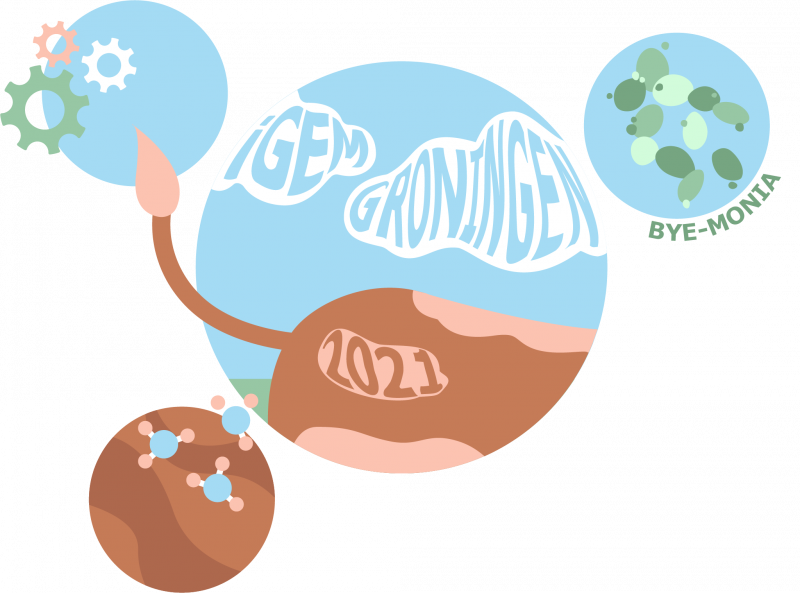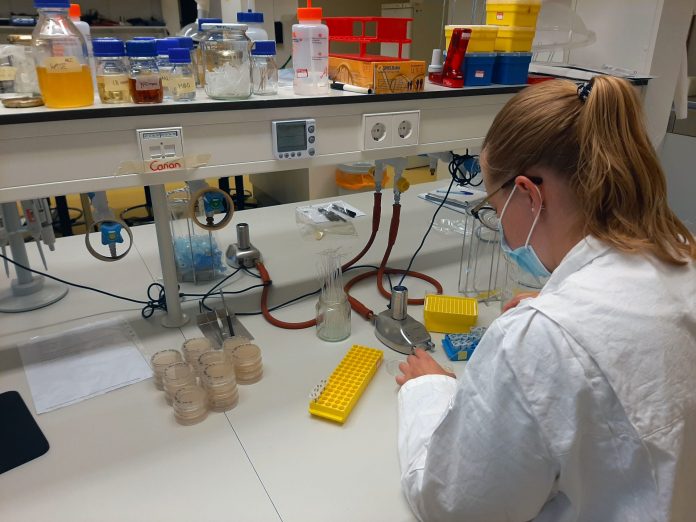Ten Groningen students may have discovered the perfect way to solve the nitrogen issue: a food supplement that inhibits the production of ammonia inside cows.

The speed limit on Dutch highways has been decreased to 100 kilometres per hour, construction projects were halted, and livestock had to be reduced. The Dutch government didn’t take half measures in an effort to combat the nitrogen crisis. Furious, farmers shut down highways in protest, and one even broke down the door of the Groningen provincial building with his tractor.
But what if you could tackle this problem at the source? What if you could prevent cows, whose faeces release large quantities of ammonia, from producing as much of the harmful chemical? Ten Groningen students think it’s possible.
They’ve made quite a bit of progress already. ‘We’re hoping to show the government and the farmers that there’s a different way to go about it’, says biomedical sciences student Milou Venema.
DNA
The ten students, from the programmes artificial intelligence, biomedical sciences, and chemistry, are working to creating a nutritional supplement using yeast. Baker’s yeast is one of the most common forms of yeast, a single-celled fungus that’s been used for baking bread and brewing beer for millennia.
However, their baker’s yeast is just a little bit different; they’ve modified it. The students have manipulated the yeast DNA to create a substance that, when mixed with their feed, stops cows from producing as much ammonia.
One interesting side effect: it also stimulates growth and milk production. So it’s a win-win situation.
Real problems
Together, the ten students form the iGEM team. This year, they’ll be representing the UG at the largest student competition for genetic manipulation. They’ll be one of 356 teams trying to tackle real problems with synthetic biology.
For six months, the teams spent every possible moment, even during the summer, in the lab or the office. They experimented with four different types of yeast, inserting extra pieces of DNA, which they’d simply ordered from a mail order company.
Milou explains that the modifications made the yeast cells produce alpha-amylase. Mixing that into livestock feed makes cows digest their food more efficiently, which means they produce less ammonia. The chemical isn’t new to cows’ stomachs: alpha-amylase is already present, just in smaller quantities.
Resources
Ultimately, the students’ goal is to use as few resources as possible to make as much alpha-amylase as they can. ‘To keep costs down’, says Milou. They can choose from 640 different combinations of yeast and DNA.
‘Fortunately, we only need to create 10 percent of these combinations for artificial intelligence to be able to predict which combination will work best.’
In addition to the food supplement, the students have also been brainstorming more ‘traditional’ ways of combating ammonia: a filter to catch the ammonia being produced in a barn. These could be used in pigsties and chicken coops. These Metal Organic Frameworks (or MOF) contain a powder that ammonia sticks to.
State of the art
They could then feed that captured ammonia to their yeast cells to help them grow, making the entire project circular. ‘But it’s all very new still. Really state of the art’, says Milou, ‘so we don’t have it completely worked out yet. But we do want to use it eventually.’
Unfortunately, the team’s plans aren’t necessarily easy to put into practice. A type of yeast that doesn’t occur in nature can’t just be produced by anyone. ‘It’s a genetically modified organism’, says Carian Kuitert, biomedical sciences student. ‘The Netherlands have some very strict guidelines you have to meet before you can work with GMOs.’
Whether they’ll succeed or not, the students have certainly proved that there are alternative solutions to the nitrogen crisis. ‘What I love about our project is that it stops the ammonia production at the source; in the cow’s stomach’, a proud Milou says. ‘We’re hoping for someone to pick it up and start working with it. Whether we’ll continue with it or not.’
The students are raising money so they can participate in the competition gofundme.com.




